Class 7 Social Science Chapter 12 Worksheet Solutions - Understanding Markets
| Table of contents |

|
| Multiple Choice Questions (MCQS) |

|
| Fill in the Blanks |

|
| Very Short Answer Questions |

|
| Short Answer Questions |

|
| Match the Following |

|
Multiple Choice Questions (MCQS)
Q1: What is the primary function of a market?
a) To provide education
b) To buy and sell goods and services
c) To offer loans
d) To promote traditions
Ans: b) To buy and sell goods and services
A market is primarily a place for buying and selling goods and services between buyers and sellers.
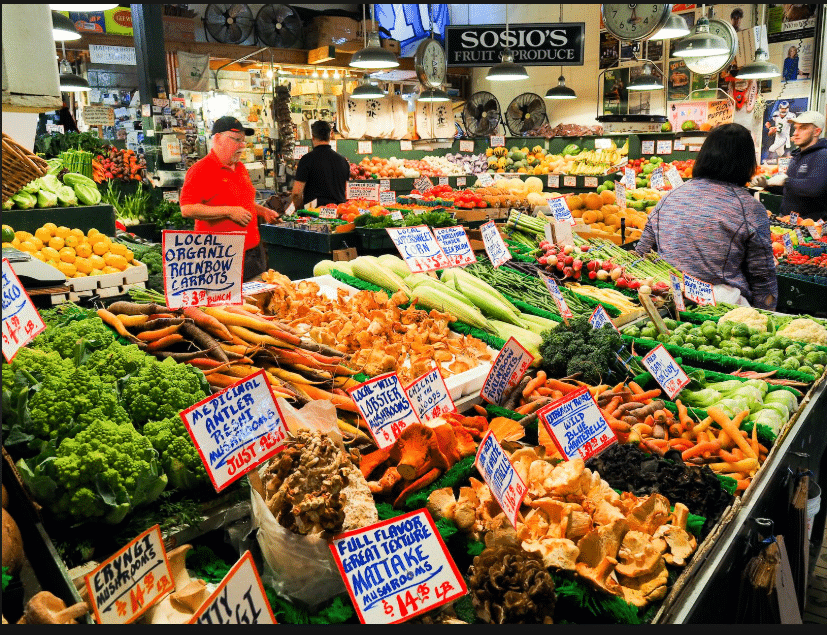 Market
Market
Q2: What is one of the main problems with the barter system?
a) Difficulty in measuring value
b) High transportation costs
c) Lack of demand for goods
d) Limited goods to exchange
Ans: a) Difficulty in measuring value
In the barter system, determining the value of goods being exchanged was challenging without a standard measure.
Q3: Which of the following is an example of an online market?
a) Haat
b) A local grocery store
c) An app for shopping
d) A farmer’s market
Ans: c) An app for shopping
Online markets allow buyers and sellers to transact through apps or websites, making shopping convenient from anywhere.
 Online Shopping
Online Shopping
Q4: Which market is used for exchanging large quantities of goods?
a) Retail market
b) Online market
c) Wholesale market
d) Digital market
Ans: c) Wholesale market
Wholesale markets deal with large quantities of goods, typically sold in bulk to retailers.
Q5: What term refers to the amount of goods and services that sellers are willing to offer at different prices?
a) Demand
b) Supply
c) Transaction
d) Price
Ans: b) Supply
Supply refers to the quantity of goods and services that sellers are ready to provide in the market at different price points.
Q6: Which of these products is commonly traded in domestic markets?
a) Aircraft
b) Gold
c) Fruits and vegetables
d) Electronics
Ans: c) Fruits and vegetables
Domestic markets typically deal with goods produced and consumed within the country, like fruits and vegetables.
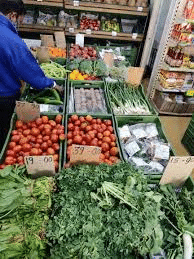 Domestic Market
Domestic Market
Q7: What is the role of government in markets?
a) To ensure fair pricing and quality
b) To limit the supply of goods
c) To increase demand
d) To make all decisions for sellers
Ans: a) To ensure fair pricing and quality
Governments regulate markets to ensure fair prices, product quality, and consumer safety.
Q8: What is one of the benefits of a market for society?
a) It decreases competition among sellers
b) It encourages innovation and better products
c) It reduces the availability of goods
d) It promotes only local products
Ans: b) It encourages innovation and better products
Markets respond to consumer needs and encourage innovation, leading to better products and services.
Q9: Which type of market allows goods to be bought from international sellers?
a) Domestic market
b) Wholesale market
c) International market
d) Retail market
Ans: c) International market
International markets involve the trade of goods and services between countries, with exports and imports.
Q10: Which of these is an example of a public good?
a) A private restaurant
b) A public park
c) A commercial store
d) A private gym
Ans: b) A public park
Public goods, like parks, are provided by the government for everyone’s use and do not generate profit.
Fill in the Blanks
Q1: The barter system had the problem of ________, where both parties had to want what the other had.
Ans: Double coincidence
In the barter system, both parties had to want what the other had, which was rarely the case.
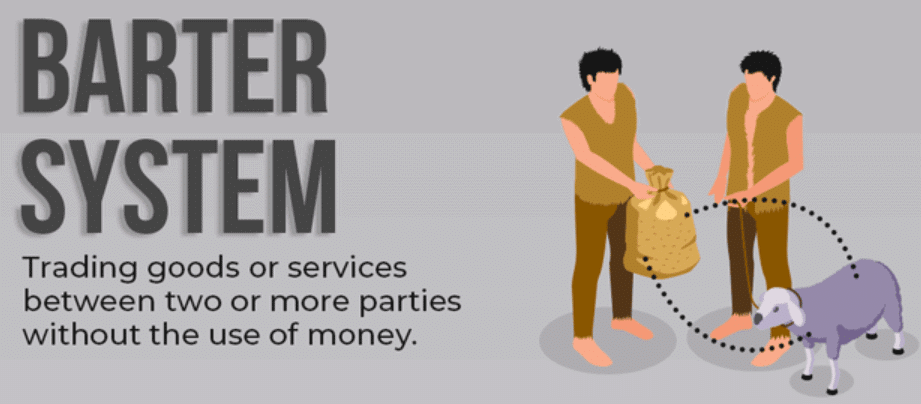 Barter System
Barter System
Q2: A market where buyers and sellers meet in person to exchange goods is called a ________ market.
Ans: Physical
Physical markets require face-to-face transactions, such as weekly bazaars and local shops.
Q3: A market where transactions happen over apps or websites is known as an ________ market.
Ans: Online
Online markets allow for transactions without physical presence, like shopping on e-commerce websites or apps.
Q4: ________ refers to the quantity of goods that buyers want to buy at different prices.
Ans: Demand
Demand represents how much of a product consumers are willing to buy at varying prices.
Q5: The process of ________ involves setting rules to ensure fair pricing, quality, and safety in markets.
Ans: Regulation
Governments regulate markets to ensure that consumers are protected and that fair practices are maintained.
Q6: A market where goods are bought in large quantities and sold to smaller retailers is called a ________ market.
Ans: Wholesale
In wholesale markets, goods are traded in bulk, typically sold to retailers who then sell to consumers.
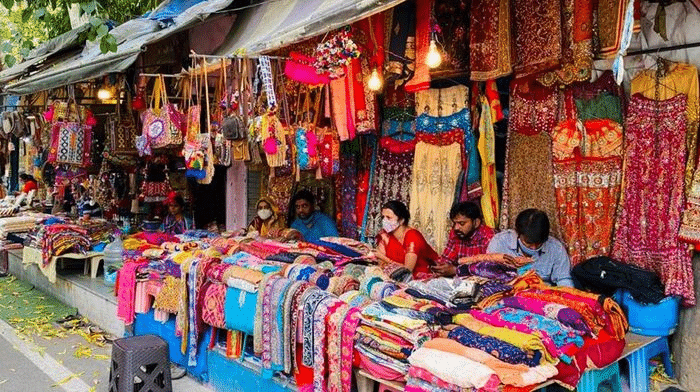 Wholesale Market of Cloth
Wholesale Market of Cloth
Q7: The ________ is a mark that ensures the quality of agricultural products like honey and vegetables.
Ans: AGMARK
AGMARK is a certification for agricultural products to ensure their quality and safety for consumers.
Q8: The ________ Mela is a major pilgrimage event that takes place every six years at four river sites in India.
Ans: Kumbh
The Kumbh Mela is a large religious gathering held at four sites in India, where millions of people gather for a holy dip.
 Kumbh Mela
Kumbh Mela
Q9: ________ is a method of assessing the quality of goods by looking at reviews, certifications, and personal experience.
Ans: Quality assessment
Consumers assess the quality of products through reviews, labels like FSSAI, and personal experiences.
Q10: The ________ market refers to the buying and selling of goods within a country’s boundaries.
Ans: Domestic
Domestic markets involve trade within the same country, such as local grocery stores or regional shops.
Very Short Answer Questions
Q1: What is a physical market?
Ans: A market where buyers and sellers meet in person to exchange goods and services.
Q2: What does "demand" mean in the context of markets?
Ans: Demand refers to the amount of goods that buyers want to purchase at different prices.
Q3: What is an online market?
Ans: An online market is a platform where transactions happen through apps or websites.
Q4: What is the role of a wholesaler in the market?
Ans: A wholesaler buys goods in bulk from producers and sells them to retailers.
Q5: What is AGMARK?
Ans: AGMARK is a certification mark for ensuring the quality of agricultural products.
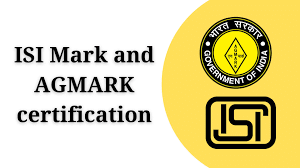 IGI Mark
IGI Mark
Short Answer Questions
Q1: Explain the role of the government in regulating markets.
Ans: The government regulates markets by controlling prices, ensuring product quality, and setting safety standards to protect consumers and maintain fair trade practices.
Q2: How does demand affect prices in a market?
Ans: If demand for a product is high, prices tend to increase. If demand is low, prices may decrease to attract buyers.
Q3: What are the key features of a wholesale market?
Ans: Wholesale markets deal with large quantities of goods, sold in bulk to retailers. They help in efficient distribution and lower prices compared to retail.
Q4: What is the significance of the Kumbh Mela in India?
Ans: The Kumbh Mela is a significant religious event that brings millions of people together for a holy dip in the rivers, symbolizing spirituality and unity.
Q5: How does the online market differ from the physical market?
Ans: In online markets, transactions happen via websites or apps, offering convenience but lacking physical interaction, unlike in physical markets where goods can be seen and touched)
Match the Following
(Match Column A with the correct option in Column B)
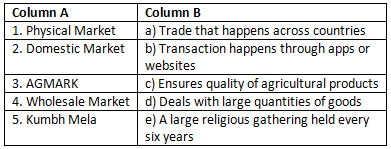
Ans: Matched Pairs and Explanations:
- 1 → b: Physical markets involve in-person transactions where buyers and sellers meet directly.
- 2 → a: Domestic markets refer to trade within a country's borders.
- 3 → c: AGMARK is a certification mark ensuring the quality of agricultural products.
- 4 → d: Wholesale markets deal with large quantities of goods sold in bulk.
- 5 → e: Kumbh Mela is a major religious gathering held every six years at four sacred river sites.
|
1 videos|107 docs
|
FAQs on Class 7 Social Science Chapter 12 Worksheet Solutions - Understanding Markets
| 1. What are the key concepts covered in the "Understanding Markets" chapter for Class 7? |  |
| 2. How can I prepare for the MCQs related to the "Understanding Markets" chapter? |  |
| 3. What types of questions can I expect in the fill-in-the-blanks section of the exam? |  |
| 4. What should I include in my short answer responses for the "Understanding Markets" exam? |  |
| 5. How does matching concepts help in understanding markets for Class 7? |  |















